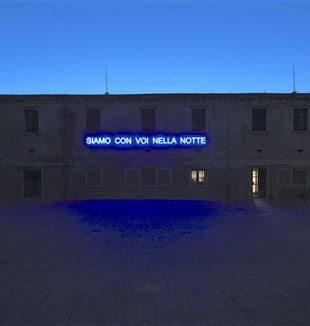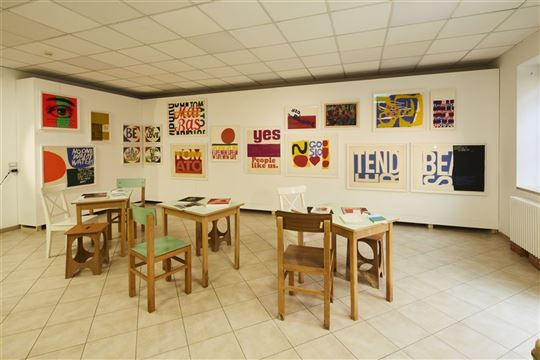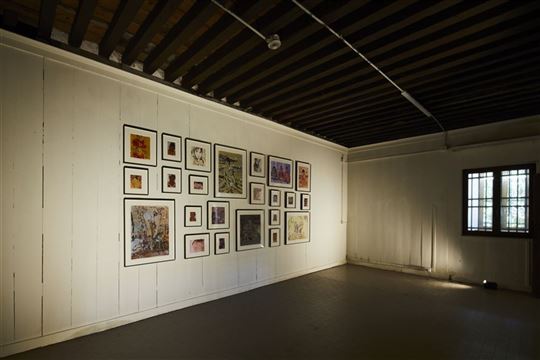
Biennale: You cannot escape from beauty
The Holy See pavilion, "With My Own Eyes," opens in Venice. A human and artistic journey through the Giudecca Women's Prison, born from the encounter between several great artists and the female inmates.Among the works of mercy, that of visiting prisoners is certainly the most difficult to practice, for practical reasons above all. Entering a prison is complicated, and it is not like giving a coin to a window cleaner at a traffic light. I, for example, had never entered a prison until a few days ago, when I visited the Holy See Pavilion at the Venice Biennale, which opened on April 20. In entering the Pavilion – which can be visited four times a day until November 24, with reservations mandatory – one enters the Giudecca Women’s Prison, where you are met by three inmates among the 80 involved in the project, who act as guides through the prison walls. The itinerary of works, strongly advocated for by Cardinal José Tolentino de Mendonça, Prefect of the Vatican's Dicastery for Culture and Education, is titled "With My Own Eyes," and was conceived by two top curators: Chiara Parisi, Director of the Centre Pompidou-Metz, and Bruno Racine, Director of Palazzo Grassi-Punta della Dogana in Venice. The artists involved are all particularly renowned: Maurizio Cattelan, Bintou Dembélé, Simone Fattal, Claire Fontaine, Sonia Gomes, Corita Kent, Marco Perego & Zoe Saldana, and Claire Tabouret.
The first work one encounters is the only one placed outside the detention house, and it is that of Maurizio Cattelan. It is entitled Father and is a wall painting that covers the entire facade of the deconsecrated chapel of the former convent now converted into a prison. It depicts the soles of two dirty feet in black and white. The iconography is simultaneously reminiscent of Andrea Mantegna's Dead Christ and the praying figures in Caravaggio's Madonna of Loreto. As in his best works, Cattelan triggers a domino of questions: whose feet are they? Why are they dirty? Why are they visible from outside the prison? Where does the rest of the body to which those feet belong lie, ideally? Whose Father? The list of questions, in the mind of the viewer, is interrupted by the procedures required to enter the prison: handing over your ID, depositing your personal belongings, particularly your cell phone. This is a real prison, and there is no messing around: you cannot take pictures or film, either of the inmates or the prison facility. Visitors can only look with their own eyes and remember
with their own memory.
Upon entering the prison we met the three inmates who accompanied us: Silvia, Manuela and Paola. They wore a half-white and half-black dress, made in the prison’s sewing workshop. Silvia, introducing the exhibition tour, said, "My eyes will be your eyes." Her introduction framed the history of the place: an old convent, established to house "converted" prostitutes who had become destitute. The small group of visitors, about 20, was kindly escorted by a couple of prison guards towards the café inside. Several silkscreens by Sister Corita, the legendary artist and art teacher who in the 1960s in Los Angeles brought together the language of Pop Art with the spirit of the Second Vatican Council and the civil rights movement, hang on the walls. As they are hung in the bar, where inmates can buy drinks and snacks, the curators chose works that the artist-nun dedicated to the theme of food. Like the work from 1964, titled The juiciest tomato of all, which echoes a Del Monte advertising slogan, but which Corita had turned upside down by making it a hymn to the Virgin Mary: "Mary mother is the juiciest tomato of all." Man's desire, tickled by the manipulative communication of consumerism, is reconnected with an object truly worthy of it.
In the narrow alleyway that connects the café to the garden cultivated by the facility's female guests, we find lava stone works by Simone Fattal, a Lebanese artist with a U.S. passport who studies at the Sorbonne. The artist asked the inmates involved in the project to write down a thought that they could entrust to her, and which she could work on. Manuela explained, "We trusted her and it was worth it." Some of the colored squares contain excerpts from the collected texts, with shaky handwriting that makes them difficult to read. In one of them some words are recognizable: "sad," "afraid," "fragile." These are the very words of one of the guides accompanying us, Paola. She is a small woman, whose white hair is gathered and tied up behind the nape of her neck. She gave the impression that she has been in there for several years. Further on are sheets reproducing the full texts. We found hers. It is a poem entitled Quando [When]: "When I am sad/ I would like to isolate myself/ curl up in bed/ and not listen to you./ When I am sad/ I cannot be afraid/ because in this place/ there is no armor./ When I am sad/ I cannot be fragile/ because I cannot shed tears."
At the end of the alleyway, under the watchtower, is the first work by the duo Claire Fontaine (Fulvia Carnevale and James Thornhill), to whom we owe the title of this year's Biennale ("Foreigners Everywhere"). It is a white neon work in the shape of a stylized crossed-out eye, a symbol used to indicate things that are not seen or should not be seen. One of the guides explained, "We become invisible in here. And the world prefers not to see us. And when it looks at us, it judges us. We wish we would not be judged." The prison guard warned us that we were about to enter the free time courtyard, and asked us not to disperse or get close to the inmates. Hanging on the wall of the former cloister, we found Claire Fontaine's second work. It is another inscription in blue neon: "Siamo con voi nella note” [We are with you in the night]. It appeared outside Italian prisons in the 1970s in support of politically motivated prisoners. Seen from inside the space of the prison, the statement also seems to be addressed to the visitor, to me. And the night, perhaps, is not only a reference to the sentence to be served for a crime, but also that of daily living. Further on, one enters a small room where a 14-minute short film by the husband-wife duo Marco Perego & Zoe Saldana is shown. The director and actress/producer (she has starred in Avatar 1 and 2, Star Trek, Avengers and Guardians of the Galaxy) stage the story of a day in prison. Saldana is the film’s protagonist who experiences her last touching hours as an inmate. The film shows the interior spaces of the detention house, several guests serve as extras along with some of the probation officers.
Read also – Impressionists: The "gang" that captures the moment
Claire Tabouret instead asked the inmates to give her photographs and images to which they were emotionally attached, which the French painter, who lives in Los Angeles, has translated into 23 paintings arranged as a picture gallery. They are faces, family photos, there is even a crucifixion. Manuela explained, "This room is my favorite. In the center is the image of me as a child, at 11 months old, taking my first steps toward my mother. Over there is my last grandchild, who is now 16 months old. It is an ode to motherhood and the joy of life. It is all here." The group moved on, and as we entered the chapel of the former convent, we read the inscription on the architrave of the small doorway. They are verses from the Dies Irae: "Qui Mariam absolvisti et latronem exaudisti mihi quoque spem dedisti," "You who forgave Mary Magdalen, you who healed the good thief, you also gave me hope." In the square hall of the 16th-century building, the São Paulo-based Brazilian artist has hung lianas of various colored fabrics from the ceiling. Perhaps it is a reference to the proverbial knotted sheets, which instead of being used to lower oneself from prison windows, are used for another kind of escape, to another kind of freedom. It is impossible not to see the image interact with the writing on the chapel walls: on one side, "Qui dilexit multum"; on the other, "Dimissa sunt ei peccata multa." To those who have loved greatly, many sins are forgiven. These are words that span the centuries and return to speak to visitors to the Holy See Pavilion. A message that, within a Biennale that reflects on the sins of the West, fulfilled by histories of colonialism and the marginalization of minorities, has the flavor of water springing up in an oasis in the middle of the desert